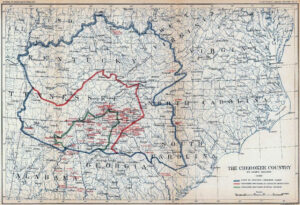
Coveted Lands: Agriculture, Timber, Mining, and Transportation in Cherokee Country Before and After Removal
Covering a period from approximately 1779 to 1850, this dissertation studies natural resources and land use in Cherokee country before and after forced Cherokee removal from east of the Mississippi. As the market economy in the South grew in the late eighteenth and early nineteenth centuries, Euro-Americans perceived the Cherokee

